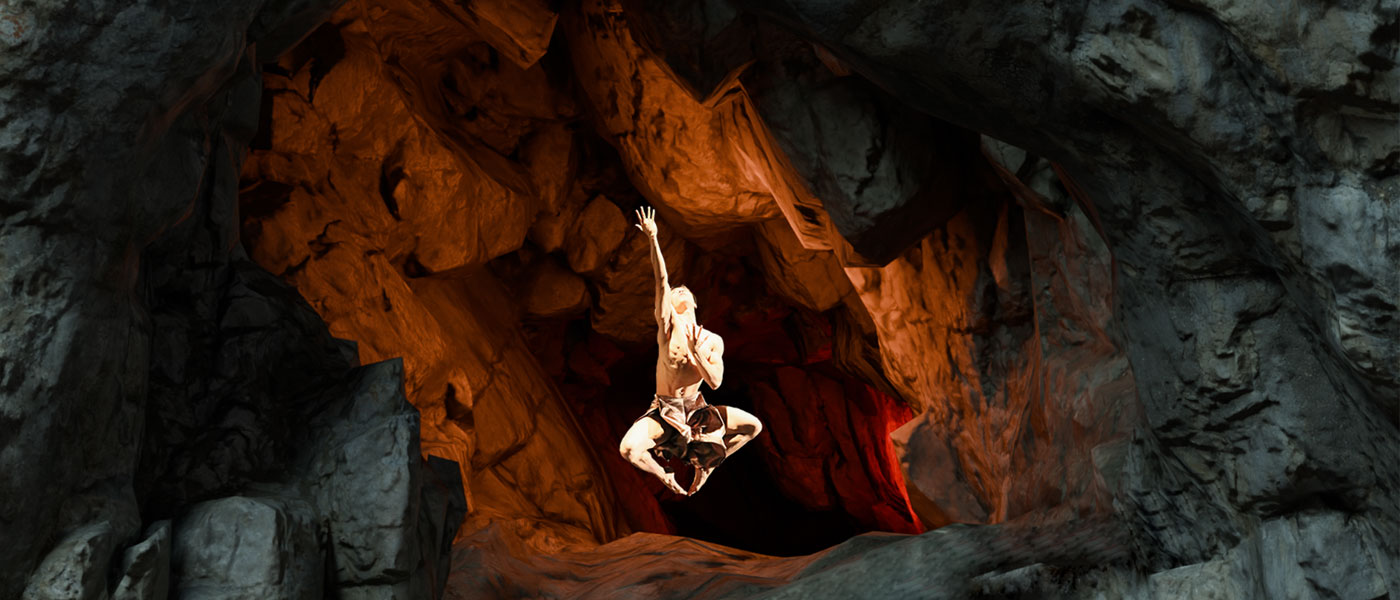When you think of dance performances, chances are your mind doesn’t go to technology—but the newest production from Case Western Reserve University’s Department of Dance looks to change your perspective. Building on a proven track record of introducing cutting-edge technology on the stage, the department created Voyages, a robust program of dances across styles.
One of the larger productions the department has presented in the past 24 years, Voyages features Professor of Dance Gary Galbraith’s new technology-infused Quest and Visiting Assistant Professor Richard Oaxaca’s Rooted, as well as the return of Into the Wind by Department Chair Karen Potter and last year’s audience favorite Cave of the Heart by Martha Graham.
Galbraith created and choreographed Quest in collaboration with colleagues across the university and with support from an Expanding Horizons Initiative grant through the College of Arts and Sciences.
The dance includes the use of Microsoft HoloLens technology, LD LiDAR (Light Detection and Ranging), and an original music score in true surround-sound—and it’s the first dance of its kind to integrate all these technologies.
“Quest is the current generation of art and technology in the form of extended reality dance theater and immersive audience experience,” Galbraith explained. “By use of holograms and 3D LiDAR, audience members are taken into an underground world yet clearly remain in the theater.”
Put simply, Galbraith believes people should plan to see the production because there’s nothing like it, anywhere—not in Cleveland, not in the United States, and not in the world.
Zhaonian Li, a third-year Master of Fine Arts student who is dancing the lead in Quest, describes the experience as transformative for his growth, both as a dancer and performer.
“Even though I can’t see the hologram projections while performing, using the HoloLens has allowed me to really sense what’s happening around me,” Li noted. “This added awareness has deepened my connection to the character and the story. I also feel that the choreography and technology together create a powerful connection between the dancers, allowing us to embody our different characters more fully.”
A full program
Not only will viewers have a rare chance to witness dance at the cutting edge of technology and artistry, but the production also features three other dances that are uniquely compelling, from timeless masterpieces to innovative new works.
Cave of the Heart by legendary 20th century contemporary dancer/choreographer Martha Graham is one of the signature masterpieces in the Graham repertoire—and the Department of Dance is the first ensemble outside of the Graham company to perform this work, which is another unique “first” for the department.
“It is a real treat to see the entire ballet Cave of the Heart outside of New York; it is a unique gift to be able to share with our university and Cleveland communities,” Galbraith noted. “The work of Karen Potter brings her unique vision and use of circus-like apparatus into contemporary dance and performed by our faculty. The new work by Oaxaca showcases our students in his signature style.”
Galbraith said they expect very full houses for the remaining three shows, so those who wish to attend should get their tickets now. Voyages will be performed Nov. 7-9 at 7 p.m. at Mather Dance Center, 11040 Bellflower Road, on the Case Western Reserve campus in University Circle.
“Dance as a performing art is at its best in live performance,” Galbraith pointed out. “Seeing video recordings of performances does not provide the true in-person experience. In this day and age with countless sources of digital streaming sources, live experiences are now needed more than ever to help us remain connected not by asynchronous media but rather live human experiences.”


